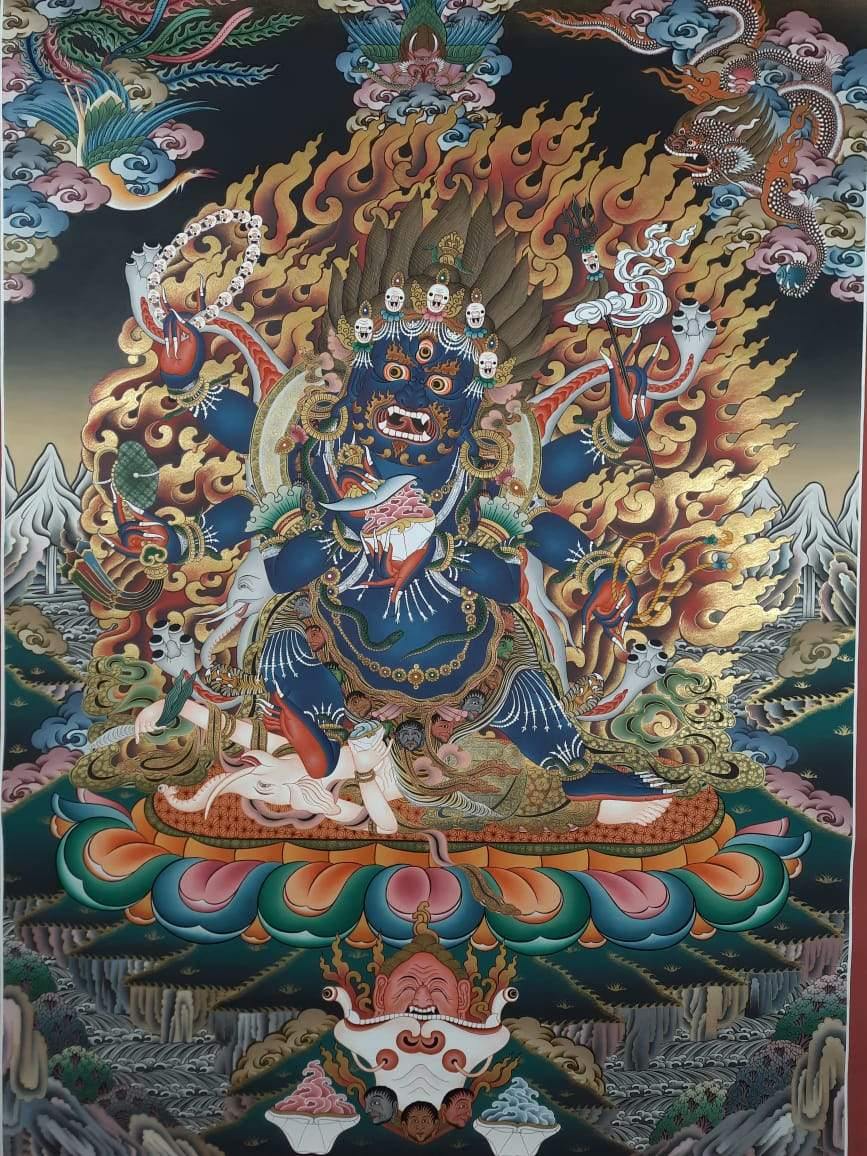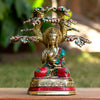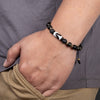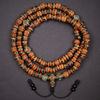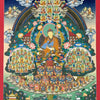SIX ARMED MAHAKALA
The six-armed Mahakala is related to the story of Avalokiteshvara, the Buddha of Compassion, which broke into thousands of pieces looking at the miseries and sorrows of humans on Earth. Amitabha Buddha one of the 5 Dhyani Buddhas decided to bring back in one form. All he could do was bring her back in form with numerous heads and a thousand arms. In this pattern, the Buddha of kindness took this irritating form of Mahakala to assist humans succeeded misery and suffering. Black or blue, the Mahakala has six arms and two legs. Its Sanskrit name is Sadbhuja Mahakala, while its Tibetan name is Chadroukpa. In his right hand, he holds a necklace of skulls, a curved knife, and a dhamaru. In his left hand are a kapala, a trident, and a cord.
Related: Buy Mala Beads Online
SYMBOLISM
- The five skulls present in his Crown represent the five poisons ( Desire, Hatred, Ignorance, Jealousy, and Ego ) transforming into Wisdom.
- The three Eyes represent the knowledge of Time ( past, present, and the future).
- The curved knife in his first right hand is used to cut down Ignorance.
- The skull in his left hand symbolizes the victory over the Demons.
- The Elephant's skin cloak demonstrates victory over Ego.
- The serpents around his neck represent victory over hatred.
- The black color of his body symbolizes the unchangeable nature of Dharma and the terminal nature of the Spirit.
- The six arms represent the possession of the Six Perfections. ( Giving, Ethics, Patience, Diligence, Concentration, and Wisdom)
Related: Buy Thangka Paintings Online
ATTRIBUTES
- The necklace of skulls signifies that he will achieve without any interference for the good of mankind.
- The Dhamaru in his third right hand is utilized to keep the Dakinis in line.
- The Trident in his other left hand symbolizes that he is going to exercise his activities in the three hemispheres (desire,form, and non-form)
- The Cord in his third left hand symbolizes that He is going to tie down those who wander from the path of Dharma.
- The two legs signify that he will achieve not only his good but also that of others.
- The white elephant he is standing on symbolizes the elimination of obstacles while the tiger skin he wears around his waist represents the victory over Desire.

